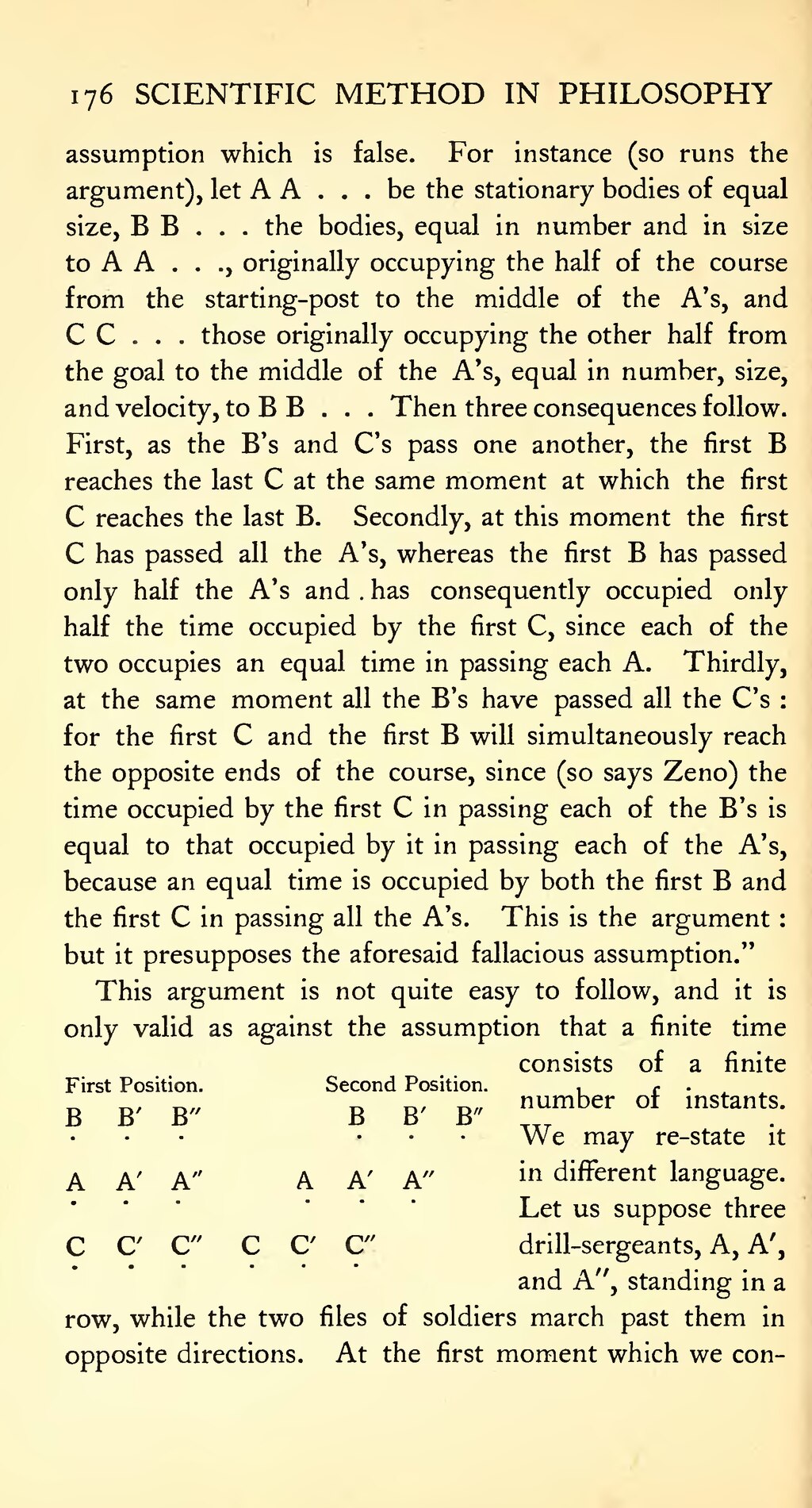assumption which is false. For instance (so runs the argument), let A A . . . be the stationary bodies of equal size, B B . . . the bodies, equal in number and in size to A A . . ., originally occupying the half of the course from the starting-post to the middle of the A’s, and C C . . . those originally occupying the other half from the goal to the middle of the A’s, equal in number, size, and velocity, to B B . . . Then three consequences follow. First, as the B’s and C’s pass one another, the first B reaches the last C at the same moment at which the first C reaches the last B. Secondly, at this moment the first C has passed all the A’s, whereas the first B has passed only half the A’s and has consequently occupied only half the time occupied by the first C, since each of the two occupies an equal time in passing each A. Thirdly, at the same moment all the B’s have passed all the C’s: for the first C and the first B will simultaneously reach the opposite ends of the course, since (so says Zeno) the time occupied by the first C in passing each of the B’s is equal to that occupied by it in passing each of the A’s, because an equal time is occupied by both the first B and the first C in passing all the A’s. This is the argument: but it presupposes the aforesaid fallacious assumption.”
This argument is not quite easy to follow, and it is only valid as against the assumption that a finite time consists of a finite number of instants. We may re-state it in different language. Let us suppose three drill-sergeants, A, A', and A'', standing in a row, while the two files of soldiers march past them in opposite directions. At the first moment which we con-
